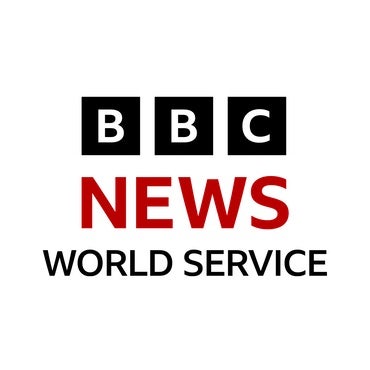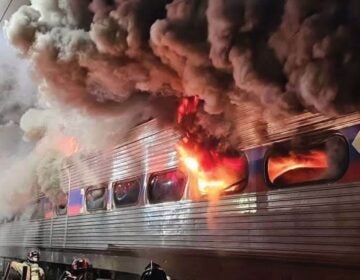Looming SEPTA cuts could increase climate pollution in the Philly area
An analysis by WHYY News shows the increased traffic could raise Philly’s transportation sector carbon emissions by around 4%.
Listen 1:14
Wayne Station is one of about two dozen stops along SEPTA's Paoli/Thorndale Regional Rail line. (Kenny Cooper/WHYY)
Have a question about Philly’s neighborhoods or the systems that shape them? PlanPhilly reporters want to hear from you! Ask us a question or send us a story idea you think we should cover.
If the drastic service cuts SEPTA has warned about become a reality, that could mean more drivers on the roads and an increase in planet-warming carbon emissions in the Philadelphia area.
An analysis by WHYY News’ Climate Desk found that the additional vehicle traffic regional planners say would result from the cuts could increase annual greenhouse gas emissions from Philadelphia’s transportation sector by roughly 4% and the city’s overall carbon emissions by 1%.
“That’s a lot,” said David King, professor of urban planning at Arizona State University. “That’s a massive failure.”
SEPTA says a $213 million budget shortfall starting this summer caused by the end of federal COVID relief money and rising costs would force it to slash service system-wide by 45%, increasing fares while eliminating five Regional Rail lines and 50 bus routes, reducing service by 20% on remaining routes, cutting service for special events and implementing a 9 p.m. curfew on metro and Regional Rail.
Pennsylvania Gov. Josh Shapiro has proposed a state budget SEPTA says would prevent these cuts, but his spending plan would need to make it through the Republican-controlled state Senate, which rejected a similar proposal last year.
Big increase in vehicle traffic would mean more carbon emissions
The Delaware Valley Regional Planning Commission estimates SEPTA’s cuts would force passengers into cars, boosting traffic dramatically in the region. The agency estimates there would be an increase of at least 275,000 cars on Philly-area roads daily.
“It’d be more traffic than anyone in Philadelphia has experienced maybe in their lifetimes,” said Matt Gates, associate director for travel trends and forecasts at DVRPC.
WHYY News’ Climate Desk found the additional traffic projected by the DVRPC would release roughly 150,000 metric tons of additional carbon emissions in Philadelphia and another roughly 150,000 metric tons across Bucks, Chester, Delaware, and Montgomery counties per year.
(WHYY News used a conversion factor published by the EPA to calculate the potential greenhouse gas emissions from the additional yearly vehicle miles traveled estimated by DVRPC, then compared the results to Philadelphia’s 2022 greenhouse gas emissions. That year’s emissions inventory likely reflected less vehicle travel due to remote work trends associated with the COVID-19 pandemic.)
WHYY News’ analysis is a rough estimate, as it does not account for electric or hybrid vehicles that would contribute to the induced traffic, or the decrease in carbon emissions from the eliminated rail, bus and other transit trips. The cuts could also have some hard-to-predict effects on car trips, for example, if people who previously commuted to work by SEPTA Regional Rail begin working from home, King said.
SEPTA officials say they expect the service cuts would drive up overall transportation emissions, since their transit system — which includes electric trains, subways and trolleys and carries many passengers at once — is less carbon-intensive than single-occupancy vehicles.
“We know that when transit is less available, that more people choose to drive, which increases things like the greenhouse gas emissions,” said SEPTA Chief Innovation Officer Emily Yates.
In Philadelphia, emissions from the transportation sector, which includes sources such as vehicle traffic, construction equipment and passenger and freight rail, amounted to 28% of the city’s total emissions in 2022 — the same portion of emissions the sector contributed on a national level. In Philly, transportation comes in second to buildings and industry as the top source of carbon emissions. Nationally, transportation is the leading source.
“A well-functioning transit system is extremely important for reducing emissions,” said Serena Alexander, a professor of public policy and environmental engineering at Northeastern University.
Ripple effects could be bad for the climate
A roughly 4% increase in greenhouse gas emissions from transportation in Philadelphia may sound small, but it’s an important slice in a city that aims to get to net-zero by 2050, said Jesse Keenan, director of Tulane University’s Center on Climate Change and Urbanism.
“How many trees do you need to plant to get that back?” Keenan said. “How many homes are you going to have to energy retrofit to make up for that increase in emissions?”
The loss of SEPTA Regional Rail lines in particular could have ripple effects that lead to more climate pollution elsewhere, Keenan said. People living in denser suburban areas along rail lines might choose to move into less dense, more car-dependent areas if they can no longer use SEPTA to commute into Philly.
“I can’t get on the train, … well, why am I paying the housing premium to be co-located near a SEPTA station?” Keenan said. “I’m going to move out … even further afield.”
If the SEPTA cuts push people to buy cars, that could lock them into a more carbon-intensive lifestyle, King said.
“Suddenly they’re driving for every single one of their trips, and it’s going to be very, very hard to get them back onto the transit system,” he said.
Impacts to local air quality, property values and mobility
It’s not just carbon emissions that could increase if the SEPTA cuts went into effect, Alexander said. People without access to cars would lose accessible mobility options. The cuts could also drive down property values near shrinking Regional Rail routes.
“You will see the impacts across the board,” Alexander said. “You will have worse air quality. You would have worse traffic, possibly more fatalities if traffic goes up, freight issues, economic issues.”
In addition to planet-warming greenhouse gases, gas-powered vehicles release unhealthy air pollutants that can exacerbate asthma and other lung conditions.
Emissions of particulate matter and ozone in the Philadelphia area would likely increase as a result of the cuts, said DVRPC Executive Director Ariella Maron.
“If you have more cars on the road, and if those cars are mostly internal combustion engines, you’re going to have more air pollution,” she said. “That goes without saying.”
The Philadelphia-Wilmington-Atlantic City area already fails to attain federal standards for ozone. In its long-range planning, DVRPC tracks air pollution from transportation across the region and needs to ensure projects do not delay the region’s attainment of federal standards. The planning commission worries the SEPTA cuts could make it harder for the region to meet these requirements, and eventually put federal funding for transportation projects at risk, Maron said.

Get daily updates from WHYY News!
WHYY is your source for fact-based, in-depth journalism and information. As a nonprofit organization, we rely on financial support from readers like you. Please give today.








